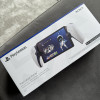Detecting cancer via the blood
Interview with
Cancer is one of the biggest killers in the developed world, and the later it is detected the worse the prognosis for the patient, so being able to spot cancer sooner is a top priority for researchers. A team from the Cancer Research UK Cambridge Institute have developed a new blood test that can track down eight different cancer types. Chris Smith spoke to James Brenton, from Cancer Research UK...
Chris - Cancer is one of the biggest killers in the developed world, and the later it's detected, generally, the worse the prognosis for the patient. So being able to spot cancer sooner is a major priority for researchers and doctors. A team from the Cancer Research UK Cambridge Institute have now developed a new blood test that can track down up to eight different cancer types. And James Brenton who is from C.R.U.K is with us to explain how it works. Now James, we’re familiar with the idea that cancer generally starts in a tissue somewhere.So what's the blood got to do with this?
James - Well one of the biggest advances in the past 10 years is the realization that we can detect the faulty DNA that's inside cancers in the bloodstream, and that can be used as a non-invasive liquid biopsy test to try and pick up cancer either in patients who have it or potentially as an earlier diagnosis method.
Chris - So when a person has cancer in any part of their body the abnormal cells there, are spilling DNA over into the bloodstream and that's what you're saying you can go for.
James - That's right. In fact, this is a very interesting part of the process which we don't fully understand. As cancer cells die they release their DNA into the blood. That means you can detect it in the blood. The problem is, is that our blood has got DNA from normal cells in it, particularly from the white cells in the bone marrow. And this is in a huge excess compared to the amount of faulty DNA that comes from the cancer cells.
Chris - So you’re literally doing a DNA needle in a haystack and it's a giant DNA haystack.
James - Absolutely. And in fact the advance we've done, is to guess that perhaps there might be specific size differences in the DNA from the cancer as opposed to the normal DNA.
Chris - What do you mean by size differences?
James - So we know that DNA from normal cells is about 166 base pairs long.
Chris - Genetic letters
James - Indeed. So the size of it is a very specific size. But then if we look at DNA sizes from cancer, these sizes are significantly shorter; between 90 and 150 base pairs. That's again the unit
size of a piece of DNA. And so our advance, is really by using a very cheap test we can significantly improve our ability to detect that DNA, by pulling out specific sizes of the DNA from the blood.
Chris - To just summarise it then, basically if I take a blood sample from me, I assume I don’t at the moment have cancer, and you look at the DNA that's floating around in my bloodstream you will see fragments of the DNA that's come out of dead or dying or lysed cells, and on average it's going to be 150 or so genetic letters long, those bits, and you're saying if I had cancer though you'd see another population of bits of DNA there which were much shorter.
Chris - Do you know why they should be much shorter?
James - So we know that when normal cells die, the DNA in those cells is broken up by a process called apoptosis. And that's a programmed way in which the cell breaks down all its components for recycling, because the enzymes that break down the DNA work on particular sizes because the DNA itself is very very long and it's wrapped around large proteins. What happens when those normal enzymes the, sort of, turnover engines of the cell work, they chop it down to 166 base pairs or thereabouts. However in cancer those processes may be slightly different and that's because the DNA in the cancer has got different marks on it. That's called methylation and that may affect the way in which that DNA binds to these proteins, the nucleosomes that are responsible for protecting it in a normal cell.
Chris - And how good is this as a test?
James - So you talked early on about a needle in a haystack and that's really the problem that we have in front of us. We can detect, with normal methods of sequencing the DNA, probably down
to about 0.5 percent of DNA, if it's cancerous. With these new methods of, essentially, pulling out specific sizes, we can increase that by over 2 fold in at least 95 percent of cancer patients and over 4 fold in about 10 percent of patients with very significant changes in some patients. So those differences make a huge difference to picking up very important changes in the cancer that may be responsible for changing treatment or for picking up a cancer early.
Chris - So you could use it either, as a diagnostic screen. You could just screen people's blood to see if there's a cancer there in the first place. But equally you could use this if I'm on treatment for example you want to keep an eye on me to see if I've responded and if I've continued to respond or if my cancer's coming back, it would be a sensitive way to get an early warning sign.
James - So that's exactly right. So we've shown that using this cheap method means we can pick up a cancer recurring earlier than other methods of trying to detect this circulating cancer DNA. So that means that for the patient there may be earlier options. Well the patient may be better or fitter when we start treatment.
Chris - Which cancers, I mentioned earlier you said eight, but which cancers are you going for with this?
James - One of the important advances is that our method also improves detection for difficult to detect cancers, particularly those associated with brain cancer, pancreatic cancer, renal cancer, and ovarian cancer.
Chris - So these are things that tend to present late aren’t they, cancers we pick up when often they're quite advanced?
James - They are, and many of those cancers don't have easy ways of using other methods to detect or screen for them.
Chris - Is this test ready to go now or is this at the very early stages?
James - So I think the methods we've now discovered are applicable by everybody around the world. You don’t need expensive methods to apply it. And I think what will see now is validation. In other words testing our methods in other people's studies to show that it works and bring it into the clinic.
- Previous Finding dugongs with drones
- Next TechYes, or TechNo: Quiz










Comments
Add a comment